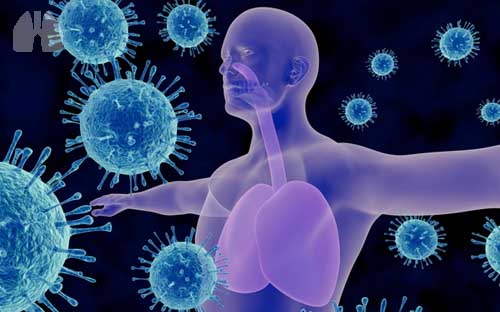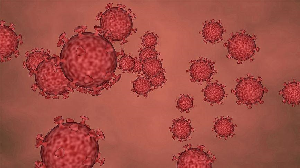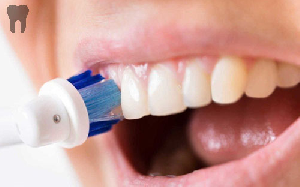
Stefano Belli, Bruno Balbi, Ilaria Prince, Davide Cattaneo, Francesca Masocco, Sergio Zaccaria,Luca Bertalli, Francesco Cattini, Arianna Lomazzo, Francesca Dal Negro, Marica Giardini, Frits M.E. Franssen, Daisy J.A. Janssen, Martijn A. Spruit
European Respiratory Journal 2020; DOI: 10.1183/13993003.02096-2020
About half of the post-COVID-19 patients had severe impairments in physical functioning and during the ADLs at discharge home.This current results provide a clear rationale to study the safety and efficacy of rehabilitative interventions in these patients.
BACKGROUND
Thousands of Italians with COVID-19 were admitted to the hospital. In the Piedmont Region 12 272 patients as of May 12 2020 survived the hospital admission, and most of them were discharged home. As the influx of COVID-19 patients is exceeding the hospital bed-capacity in Northern Italy, patients are discharged home after two negative reverse transcription polymerase chain reaction (RT-PCR) tests for the acute respiratory syndrome (SARS)-CoV-2, notwithstanding their physical status. Nevertheless, lower-limb muscle deconditioning and an impaired performance of activities of daily living (ADLs) are likely to occur. Indeed, COVID-19 patients suffer from multiple symptoms during hospitalisation, and the acute care takes place in strict isolation, which will reduce patient's mobility to zero.
To date, no data exist on the physical functioning and performance of ADLs at discharge from the hospital. Nevertheless, it seems reasonable to hypothesise that patients with COVID-19 are in need of rehabilitative interventions directly following hospital admission. This retrospective study assessed the proportion of patients with a low physical functioning and/or impaired performance of ADLs at time they were discharged home.
METHODS
The routine data of patients with COVID-19 admitted to rehabilitation institute Istituti Clinici Scientifici Maugeri, IRCCS (Veruno, Italy) were analysed. Normally, this is a specialised rehabilitation clinic, including a Department for Pulmonary Rehabilitation. During the COVID-19 pandemic, the Department for Pulmonary Rehabilitation was transformed into a COVID-19 ward taking over hospitalised patients with confirmed SARS-CoV-2 transferred from surrounding acute care hospitals who did not have enough bed capacity. Participants signed a general consent that allows future use for medical research of their medical records. Pre-existing data were de-identified prior to analyses.
During the hospitalisation in Veruno, patients received medical treatment for COVID-19, early mobilization/bed-side physiotherapy (max. 30 min per day), and some received psychological counselling. This was not a formal comprehensive interdisciplinary pulmonary rehabilitation program, as described before. At the time of transfer from the acute care hospital to Veruno, and at discharge home (e.g., two negative RT-PCR tests for SARS-CoV-2), patients performed several routine clinical tests: the 1-min sit-to-stand (STS) test was performed as a measure of physical fitness; the Short Physical performance Battery (SPPB) was used to assess lower extremity function; and the Barthel Index was used to asses performance in activities of daily living (ADLs) (≤60 points: severe dependency). Finally, patient's gender, age, body mass index (BMI), comorbidities (cumulative illness rating scale comorbidity : all comorbidities with a severity score of 3–5 (moderate to very severe), and length of stay were recorded.
Statistics
Mean (sd) and proportions were used for descriptive statistics, as appropriate. Changes over time were analyses with a paired T-test. Moreover, Pearson's correlations coefficients were calculated between age, BMI and length of stay with 1-min chair stands, SPPB summary score and Barthel index at discharge home. The level of significance was set at p<0.01.
RESULTS
Data from the first 115 consecutive patients (49.5% women; age: 74.3 (12.7) years; BMI: 26.2 (5.7) kg·m−2) with RT-PCR-confirmed SARS-CoV-2 infection were analysed. These patients were transferred to Veruno after a mean 15.6 (10.6) days in the acute care hospital. During their stay in Veruno, four patients were sent to the emergency department for non-COVID related medical emergencies, and 8 patients died between 2–45 days after the transfer. These 8 patients (62.5% women) were old (83.3 (5.8) years), with a high mean number of comorbidities (5.5 (2.1); 87.5% had ≥4 comorbidities), and 87.5% was bedridden at the time of entry in Veruno.
So, 103 patients (51.5% men; age: 73.9 (12.9) years; BMI: 26.6 (5.8) kg·m−2) survived the hospitalisation and were discharged home after a mean stay in Veruno of 16.1 (7.4) days. Eighty-two patients (79.6%) did not receive ventilatory support in the acute care hospital, nine patients received non-invasive ventilation (NIV, 8.7%)), while 12 patients (11.7%) received mechanical ventilation and NIV. The mechanically ventilated group stayed significantly longer compared to the remaining group of patients (33.0 (12.1) versus 16.8 (7.6) days, p<0.001). In contrast, the length of stay in Veruno was shorter for the mechanically ventilated group: 11.1 (3.4) versus 16.8 (7.6) days (p=0.012).
The mean number of comorbidities was 3.8 (2.0), 88% had ≥2 comorbidities, and 55% had ≥4. Many patients had dyspnea/cough/fever (90%), depression (33%), dysphagia (16%), and/or cognitive impairment (33%). Moreover, 78.6% of the patients had O2-supplementation (FiO2: 0.24–0.45).
At entry in Veruno, only 42% of the patients were able to do the 1-min STST test. The mean number of 1-min chair stands was 14 (6) repetitions, which was for 74.4% of the patients below percentile 2.5 of the reference values. All patients performed the SPPB, which showed that 78.6% of the patients were in the low-performance group (0–6 points), 13.5% of the patients were in the moderate-performance group (7–9 points), and 7.8% of the patients were in the high-performance group (10–12 points). Sixty-seven percent of the patients scored poor (≤60 points) on the BI, and 45.6% of the patients were bedridden. After stratification for mechanical ventilation in the acute care hospital (yes versus no), the proportion of patients with a low SPPB summary score (83.3 versus 78.0%, respectively) or with a poor BI score (66.7 versus 67.0%, respectively) was comparable between groups.
At discharge home, mean (95%CI) scores were significantly better for the number of 1-min chair stands (6.2 (4.7–7.7), p<0.001), the SPPB summary score (2.1 (95%CI: 1.6–2.6) points, p<0.001) and the BI (15 (95%CI: 11–19) points; p<0.001). However, 33.3% of the patients still had a number of sit-to-stand repetitions in 1 min which was below percentile 2.5 of the reference values. Moreover, majority of patients had low (53.3%) or moderate (17.5%) SPPB summary scores, and 47.5% of the patients still scored poor on the Barthel index (fig. 1). Problems were still reported for feeding (unable: 7%, needs help: 17%), personal toileting (needs help: 35%), bathing (dependent: 64%), dressing/undressing (dependent: 24%; needs help: 28%), toilet use (dependent: 35%; needs some help: 13%), controlling bladder (incontinent: 25%; occasional accident: 10%), controlling bowel (incontinent: 21%; occasional accident: 14%), transfer (unable, no sitting balance: 15%; major help, can sit: 29%), mobility (immobile: 35%; wheelchair independent, including corners: 30%; walks with help: 30%), and ascending/descending stairs (unable: 65%; needs help: 18%). Finally, 17.5% of the patients were still bedridden, and 21% of the patients had O2-supplementation at discharge. Age, BMI and length of stay were not associated with 1-min chair stands, SPPB summary score and Barthel index at discharge home (all p>0.10).
FIGURE 1
Proportion of patients with abnormal physical functioning and/or abnormal performance of activities of daily living. The proportion of patients (at entry in Veruno and at discharge home) with an abnormal low number of 1-min chair stands (below percentile 2.5 of the reference values); with a summary score on the Short Physical Performance Battery (SPPB) of 0–6 points (=low performance); or with a poor score (≤60 points) on the Barthel index. 1-min-STS: 1 min sit-to-stand test, SPPB: Short Physical performance Battery.
DISCUSSION
This is the first study to report a low physical functioning and an impaired performance of ADLs in COVID-19 patients who survived the hospitalisation. Therefore, it seems fair to conclude that COVID-19 patients discharged home after hospitalisation in an acute and subsequent post-acute ward, have a clear need for rehabilitative interventions. Indeed, a first recovery under the treatment/supervision of the inpatient physiotherapy team was noticed during the post-acute hospitalisation. However, physical functioning and performance of ADLs were still significantly hampered at discharge home. The current results resemble findings in patients with chronic obstructive pulmonary disease (COPD), who are weakened, have a low physical functioning and a poor performance of ADLs at discharge home following an exacerbation-related hospitalisation. Interestingly, early post-hospitalisation pulmonary rehabilitation has shown to be safe and beneficial (e.g., better physical functioning and quality of life) in patients with COPD. Timely referral to post-hospitalisation rehabilitative interventions in Northern Italy seems very difficult, as present accessibility is limited. Actually, many specialised pulmonary rehabilitation facilities are currently used for COVID-19 care, as the one in Veruno. Moreover, the number of post-COVID-19 patients in need of rehabilitation will likely outnumber the regular capacity of specialised pulmonary rehabilitation clinics. Finally, a lock-down does not seem to be an encouraging environment to become physically active. Therefore, it seems reasonable to hypothesise that these elderly, multimorbid post-COVID-19 patients will have a slow and/or incomplete post-hospitalisation recovery. This may have detrimental consequences for patient's autonomy and participation, cause both caregiver burden for family and friends and increased health care resource utilisation.
Interestingly, only 12 of the 103 patients were mechanically ventilated in the acute care hospital, which suggests that hospitalised COVID-19 patients without mechanical ventilation merit post-hospital follow up. The retrospective study did not capture any details on the physical functioning before the hospitalisation, which may already have been impaired. Also, patients’ emotional and social status are unknown, but deserve adequate diagnostics and treatment. Indeed, the post-COVID-9 patients with multiple physical, emotional and social treatable traits may be excellent candidates for a comprehensive pulmonary rehabilitation program, including also occupational therapy and dietary interventions.
The current sample of patients with confirmed COVID-19 seems representative for the hospitalised patients in Italy. Then again, the current sample seems older of age and have a lower mean body mass index than US-treated hospitalised COVID-19 patients.
To conclude, post-COVID patients can have an impaired physical functioning when they are discharged home, even after early mobilization/bedside physiotherapy. These data suggest that early referral to rehabilitative intervention options in the post-hospitalisation phase should be considered.
Footnotes
-
Support statement: This work was supported by the Ricerca Corrente Funding scheme of the Ministry of Health, Italy.
-
Conflict of interest: Dr. Belli has nothing to disclose.
-
Conflict of interest: Dr. Balbi has nothing to disclose.
-
Conflict of interest: Dr. Prince has nothing to disclose.
-
Conflict of interest: Dr. Davide has nothing to disclose.
-
Conflict of interest: Dr. Masocco has nothing to disclose.
-
Conflict of interest: Dr. Zaccaria has nothing to disclose.
-
Conflict of interest: Dr. Bertalli has nothing to disclose.
-
Conflict of interest: Dr. Cattini has nothing to disclose.
-
Conflict of interest: Dr. Lomazzo has nothing to disclose.
-
Conflict of interest: Dr. Dal Negro has nothing to disclose.
-
Conflict of interest: Dr. Giardini has nothing to disclose.
-
Conflict of interest: Dr. Franssen reports grants and personal fees from AstraZeneca, personal fees from Boehringer Ingelheim, personal fees from Chiesi, personal fees from GlaxoSmithKline, grants and personal fees from Novartis, personal fees from TEVA, outside the submitted work;.
-
Conflict of interest: Dr. Janssen reports personal fees from Astra Zeneca, personal fees from Novartis, personal fees from Boehringer Ingelheim, outside the submitted work;.
-
Conflict of interest: Dr. Spruit reports grants from Netherlands Lung Foundation, grants from Stichting Astma Bestrijding, grants and personal fees from AstraZeneca, grants and personal fees from Boehringer Ingelheim, outside the submitted work.
- Received June 1, 2020.
- Accepted July 23, 2020.
- Copyright ©ERS 2020















